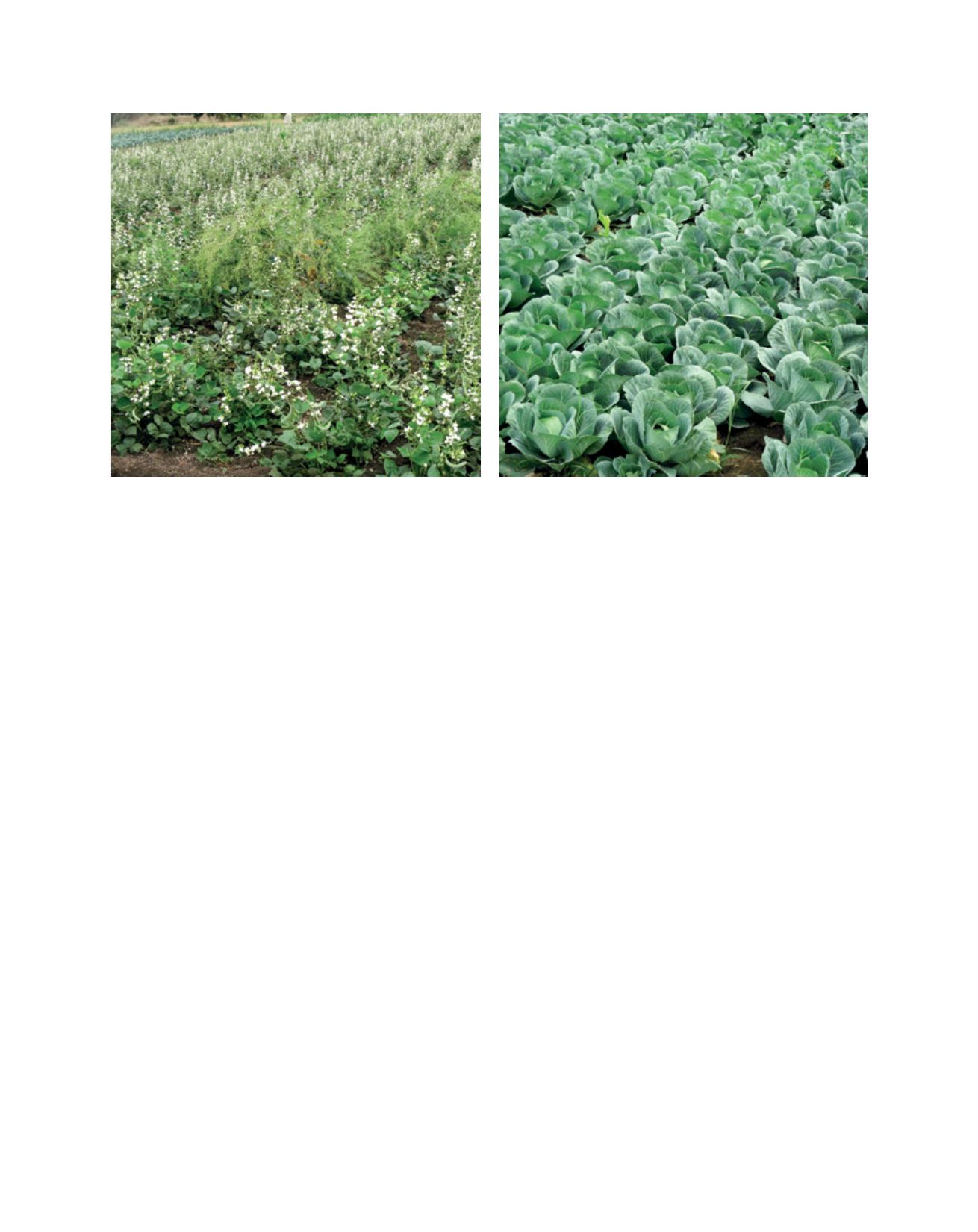

[
] 126
Using a wilt-tolerant pigeonpea high-yielding culti-
var grown on broad beds and furrows as an entry point,
community mobilization was achieved. During the first
season the pigeonpea yield increased to 600 kg ha
-1
giving farmers additional income of Rs6,000 ha
-1
in 1999.
The tangible economic benefit to smallholders triggered
collective action and common activities such as rainwater
harvesting structures benefiting the community were then
easily facilitated. In 1999, the first earthen check dam near
the village was constructed with an investment of Rs78,000
(US$1,733), benefiting nearby farmers’ wells and provid-
ing drinking water for animals and for washing clothes.
Low-cost constructions included 43 rainwater harvesting
structures, 14 masonry structures, 37 sunken pits and
97 gully control structures, and 39 open well recharg-
ing pits. Soil nutrient status mapping and soil test-based
fertilizer recommendations, the introduction of improved
cultivars, integrated pest management, vermicomposting,
Glyricidia plantation on bunds to generate nitrogen-rich
organic matter, avenue plantation, nursery raising, fodder
production in wasteland, and livestock breed improvement
through an artificial insemination centre in the village were
undertaken in participatory mode, and farmers contributed
in cash and kind to ensure ownership of each activity.
The most visible impact in Kothapally today is the
farmers’ – especially the women’s – confidence that they
can cope with the challenges of climate change. During
2014, in spite of deficit rainfall, farmers have grown their
crops using available water. Farmers are delivering 600
litres of milk every day at the computerized milk collection
centre set up by the Reliance group and about 500 litres per
day at private milk collectors. From milk alone Rs40,000
per day are added to village income. With the help of the
SABMiller women’s group, a new initiative provides spent
malt as quality feed for dairy animals, resulting in a 1.5
litre increase in milk productivity per animal per day and
Rs9,710 per day additional income in the village. Increased
water availability has transformed the village’s one-season
agriculture to three crops, with a move from maize and
sorghum to Bt cotton and high-value vegetable production.
Water is available year-round in the open wells and women
get drinking water through taps using borewell water.
The village is buzzing with activity and has 35 autos, two
luggage vans, four lorries and nine tractors. The average
crop yields of sole maize increased by 2.2-2.5 times (3.8 t
ha
-1
compared to 1.5 t ha
-1
), intercropped maize pigeonpea
with improved management produced 6 t ha
-1
compared
to 2.9 t ha
-1
, pigeonpea yields increased to 900 kg ha-1
against 200 kg ha
-1
in 1998. Similarly, hybrid cotton was
replaced by Bt cotton with increased productivity of 7.1 t
ha
-1
compared to 2.1 t ha
-1
in 1998.
9
Average household income from crop production activi-
ties within and outside the watershed is Rs15,400 and
Rs12,700 respectively. The respective per capita income
is Rs3,400 and Rs1,900. The average income from agri-
cultural wages and non-farm activities during 2002 was
Rs17,700 inside the watershed and Rs 14,300 outside it.
Growing more diversified crops and diversifying their
income sources through livestock rearing increased
farmers’ average incomes threefold in 2010 compared to
Rs25,000 in 1998. Even during the drought year of 2002,
income was 1.5 times higher than non-watershed farmers’
incomes, and the villagers in Kothapally did not migrate
for their livelihood. Watershed development has helped
improve the resilience of agricultural income despite the
high incidence of drought during 2002. While drought-
induced shocks reduced the average share of crop income
in the non-watershed area from 44 to 12 per cent, this share
remained unchanged at about 36 per cent in the watershed
area. In addition, environmental benefits include improved
Vegetable cultivation in Kothapally, India
Images: ICRISAT
D
eep
R
oots
















